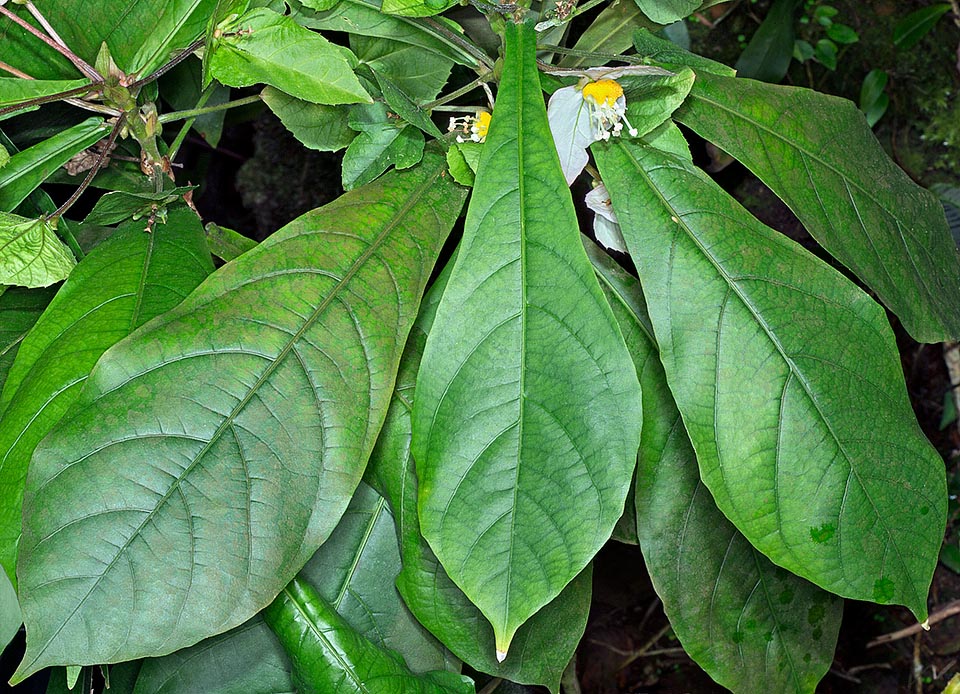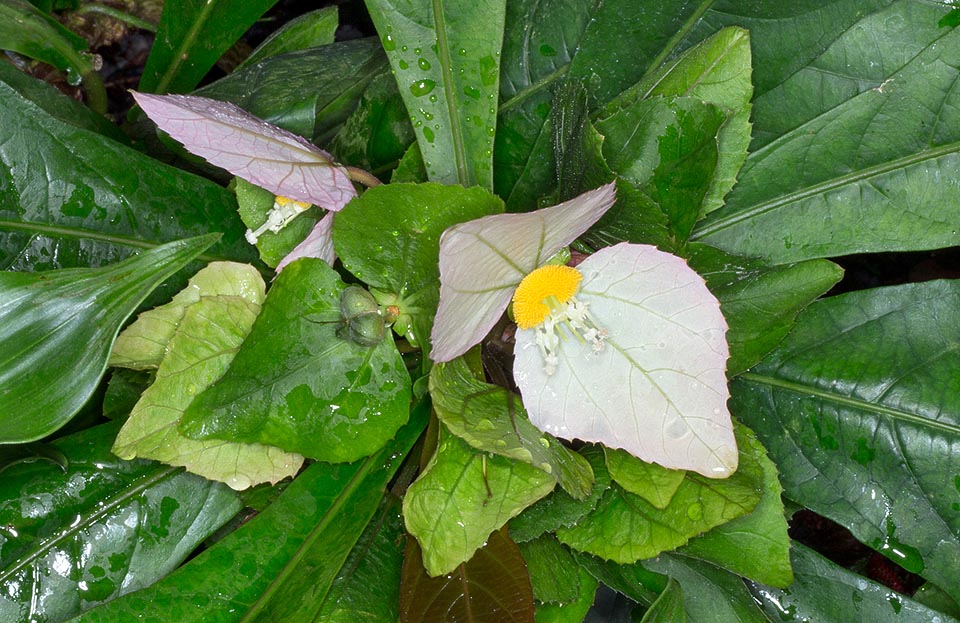Family : Euphorbiaceae

Text © Pietro Puccio

English translation by Mario Beltramini
The species is native to Belize, Costa Rica, Guatemala, Honduras, Nicaragua, Peru and Southern Mexico where it lives in the underwood of the pluvial forests, from the sea level up to 1000 m of altitude.
The genus is honoured to the French physician and botanist Jaques Daléchamps (1513-1588), author of an Historial generalis plantarum (2 vols., Lyon 1586); the specific name is the Latin adjective “spathulatus, a, um” = spatulate, wiht reference to the shape of the leaves.
The Dalechampia spathulata (Scheidw.) Baill. (1858) is an erect shrub with single or little ramified stem, pubescent, 0,5-1,2 m tall, with leaves, on an about 0,5 cm long petiole, simple, alternate, spatulate with cuspidate-acuminate apex and entire or toothed margin, facing down, of dark green colour above, paler below, 15-25 cm long and 5-8 cm broad.

Native to Central America rain forests, the Dalechampia spathulata is a 50-120 cm shrub with 15-25 cm leaves facing down © Giuseppe Mazza

The inflorescences, different from those generally used by the Euphorbiaceae, are subtended by sessile floral bracts, two external green and two inner, cordate, with obtuse apex and toothed margins, of more or less intense pink colour with 3 prominent green veins, persistent for various weeks after the fall of the flowers © G. Mazza
Quite interesting species for its ornamental characteristics, caused by the showy involucral bracts, as well as because of the singularity of the inflorescences, but little known. Utilizable in semi-shaded position in the tropical and humid subtropical regions, its cultivation may be tried in those with milder temperate warm climate in sheltered position. Elsewhere it can be cultivated in pot, in draining loam rich of organic substance, to be sheltered during the winter months in a protected location with temperatures preferably not under the 15 °C.
Synonyms: Cremophyllum spathulatum Scheidw. (1842); Dalechampia roezliana Müll.Arg. (1866); Dalechampia roezliana var. rosea Müll.Arg. (1866); Dalechampia roezliana var. viridis Müll.Arg. (1866); Dalechampia roezliana var. alba W.Bull (1875); Dalechampia spathulata var. alba G.Nicholson (1858).
→ To appreciate the biodiversity within the family EUPHORBIACEAE please click here.
